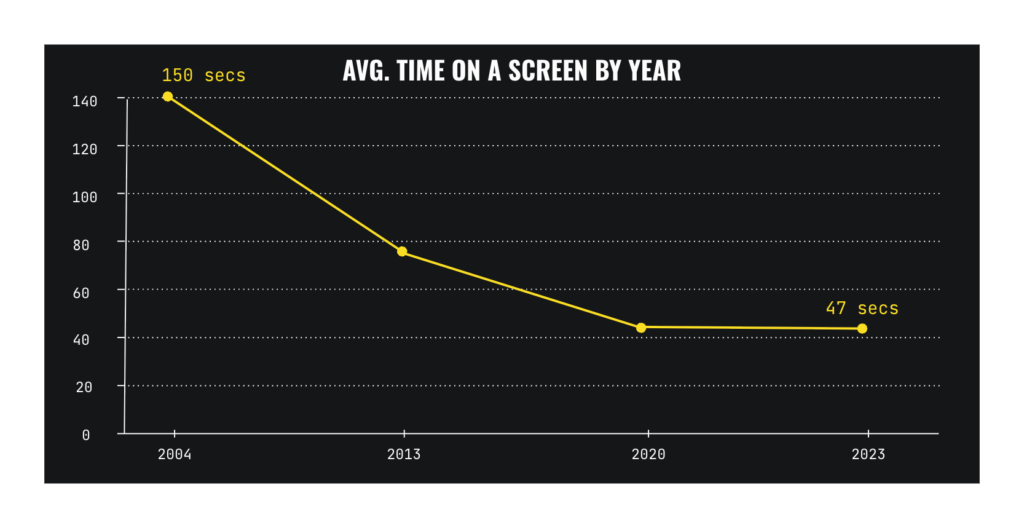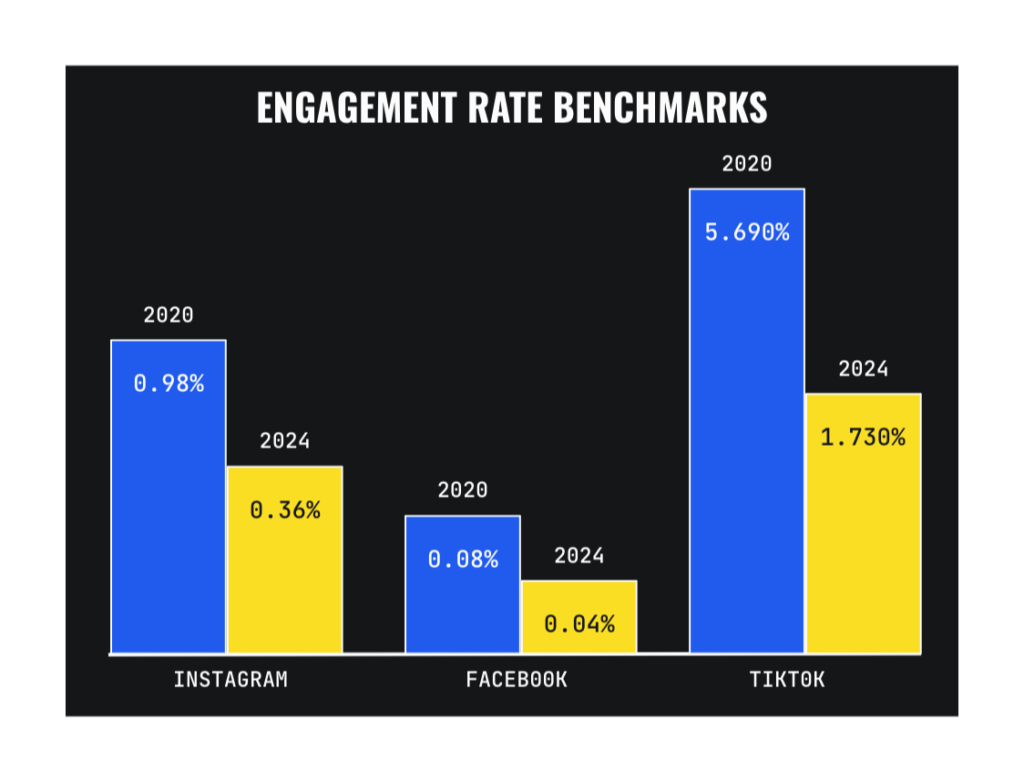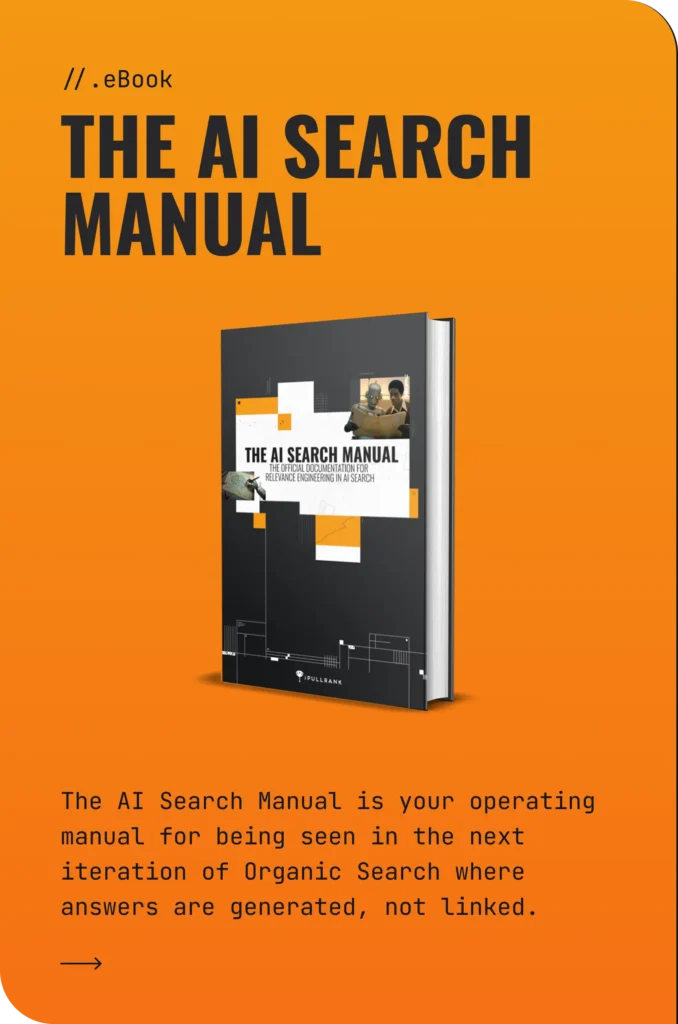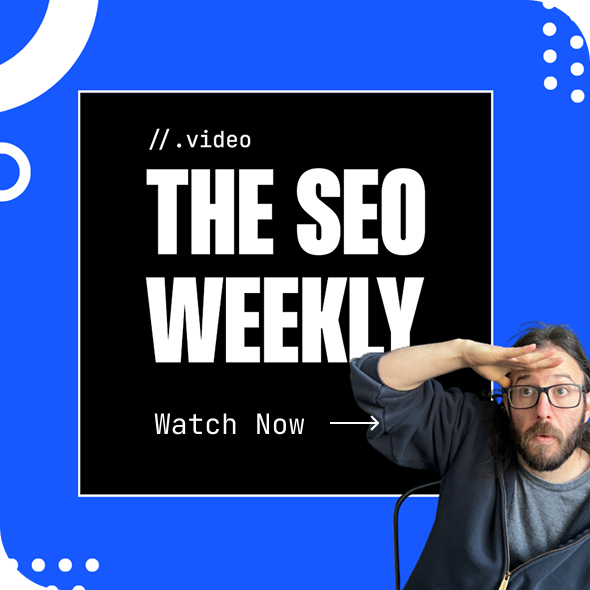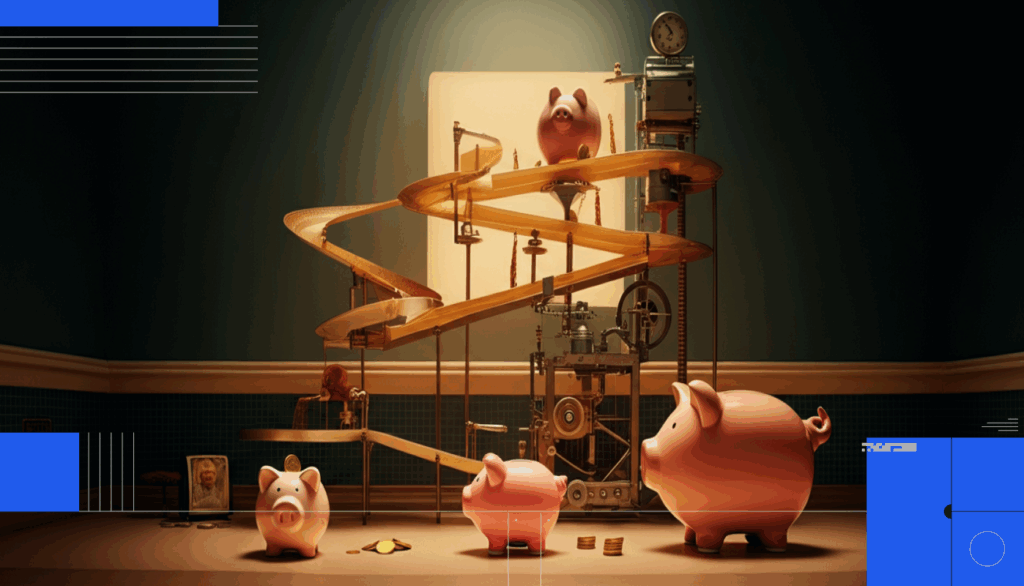I hate to start off this way, but we have created a content problem.
There is too much content out there, and most of it isn’t very good. It’s been reported that 2.6 million YouTube videos are posted each day and 7.5 million blog posts are published every day. That’s an overwhelming amount of content.
Due to this massive flood of information and the change in search with AI, there’s no way people can pay adequate attention to everything. At this point, more content doesn’t always mean more attention for your business.
The writing is on the wall: we’re in an attention recession. Attention spans are dwindling and have declined about 70% in the past 20 years. The sheer volume of things competing for our attention has exploded and publishers, marketers and content creators have successfully trained audiences to skim and scroll.
So, what can marketers do? We can’t simply “make” more attention, we have to earn it differently now. How we do that will have to evolve as the industry and consumer habits change.
The Changing Content Landscape: 3 Shifts in Content Engagement
Users are no longer passively consuming bite-sized, empty content. They’re opting into richer, more thoughtful experiences. The rise of long-form newsletters is a telling signal, with Substack now boasting over 5 million paid subscriptions and ChatGPT and AI Mode are changing the breadth with which information is delivered. These changes reflect a shifting appetite for content that informs, entertains, or challenges perspectives in meaningful and deeper ways.
Marketers used to believe the content funnel was linear with a top, middle, and bottom. Today’s audiences don’t move neatly down a single path. They interact with brands in a multi-channel, multi-touch environment moving from search to website to social to streaming to LLMs back to website and hopefully beyond.
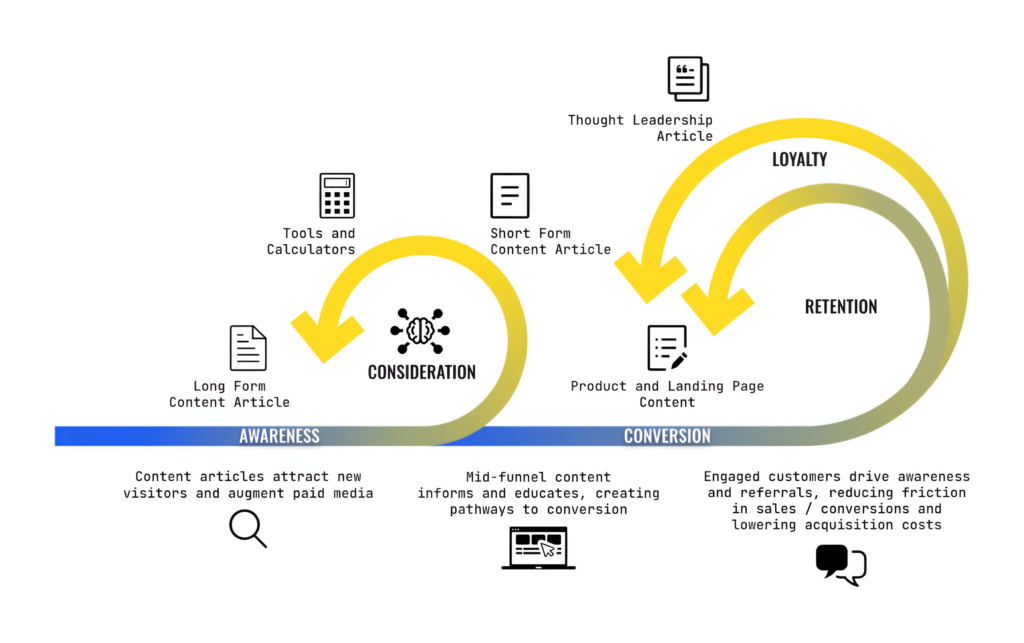
It’s no longer about bombarding people with content. It’s about meeting them with the right message, in the right format, on the right platform.
Here are three key shifts in content engagement happening right now:
1. Content Engagement Metrics Are Changing
Service-level metrics no longer tell the whole story. Traditional metrics like impressions and CTRs are increasingly misleading and don’t show true interest and depth of engagement.
While visits will always be necessary to move qualified prospects into the funnel, we can no longer depend on them as the primary metric of success for content efforts. What we measure tells us what matters and if we want to capture audience attention, we have to prioritize the depth of that attention and not simply the engagement itself.
Modern marketers are shifting toward behavioral and qualitative metrics:
- Dwell time: How long someone stays on your content reflects actual interest.
- Scroll depth: Are they consuming the entire piece or bouncing early?
- Saves, shares, and replies: These indicators of resonance are more meaningful than likes.
- Newsletter signups: These show long-term interest and trust.
- Polls and survey responses: These reviews provide qualitative insight into how visitors are enjoying your content
These are not new metrics, but they have traditionally been deprioritized in favor of quantitative. With declining traffic across industries, prioritizing true engagement will help brands and marketers create content that meets their audiences’ needs and builds loyalty and trust.
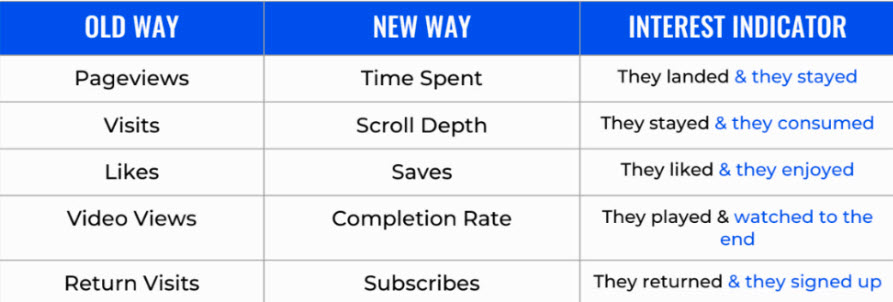
2. Content Quality Must Be Scroll-Stopping
With attention spans at an all-time low, you need more than a hook. Stopping the scroll has always been a major factor but the sophistication of content creation is driving a new aesthetic renaissance. Content needs to be more than unique. It needs to be noteworthy.
Brands must provide powerful insights, leverage proprietary data and research to tell stories, create surprising visuals, film Oscar-worthy video, and develop stories that make your audience feel seen and heard.
It is art meets science and, while art is subjective, it begins with understanding your audience, their tastes and expectations on a deeper level.
Here’s a quick flowchart to assess your content before it goes live:
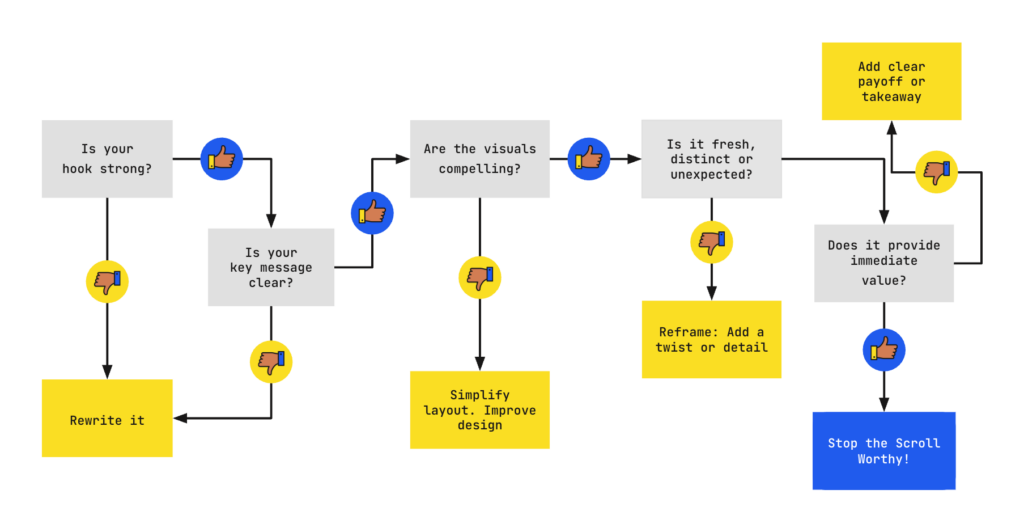
3. Post-Click Behavior Is More Valuable
In an AI world, a click is just the beginning. With now 13% of Google searches displaying an AI Overview and the full rollout of AI Mode, clicks are becoming harder and harder to get. This is making the actions a user takes post-click even more important. We can’t bank on return visits.
Post-click behavior can tell us important information about content quality:
- Did they read or skim?
- Did they sign up, buy, or bounce?
- Did they visit another page or exit the site entirely?
Tools like heatmaps, session replays, and advanced analytics (like GA4) can help marketers understand what users do after landing on content, and that data is imperative to not only improving content engagement but driving conversions.
Speaking of conversions, how we think about conversions is also shifting. Typically, we go for the big business conversion (lead forms, application starts, etc.) but we miss small marketing conversions that can drive users into the top of the funnel. These content incentives can drive email/newsletter subscriptions to build a prospect base and email marketing still proves to be a powerful business tool with open rates up year-over-year.

While much is still TBD on how the industry will shift to accommodate generative AI results and LLMs, it’s clear that content engagement (not traffic) is moving to the front as a main KPI of content efforts.
In order to grow with our audiences, creating content that truly resonates with them is no longer a byproduct but the rule. So, what is content resonance, how do we measure it, and what can brands do today to create real and lasting content?
What Is Content Resonance?
Content resonance is the strategic architecture of content built to forge authentic, lasting connections with the audience it’s meant to serve. It’s where SEO, content, strategy, and design converge to create experiences that move people to act, share, or remember and it’s an important part of Relevance Engineering.
How to Measure Content Resonance
Resonance is not a clear-cut metric. It’s a combination of metrics that indicate user experience as well as topic authority and content relevance. While there isn’t one way to quantify resonance (yet), blended metrics including brand, search, and UX can start to directionally show us if our content is getting beneath the surface.
How to Make Your Content Resonate
Resonance is a function of connection. That’s a lofty statement but it’s true. To truly resonate with a topic, person or group, your content has to connect to their concerns, questions, and needs. It has to engage them beyond surface-level understanding, it needs to be interactive to make for two-way conversations, and it has to meet them where they are.
It’s a tall order but when done correctly, it creates lasting brand affinity, drives engagement, and creates loyalists out of passersby. Here are some frameworks and considerations for creating content that resonates with your audience:
1. Follow the R.E.A.L. Tenants
In a world driven by the artificial, real content is qualified. While LLMs can drive scale and innovation, there’s no replacement for content that adheres to human standards. R.E.AL. Content is a framework that marketers and brands can use to ensure that their efforts pass the litmus test. It’s multi-disciplinary and includes audience research, experiential and interactive design and functionality, embedded conversion and ROI, and multi-channel/platform distribution.
R.E.A.L Content is:
- Resonant content that connects with the audience.
- Experiential content that’s interactive and engages users.
- Actionable content that provides clear value.
- Leveraged content that’s repurposed and distributed strategically.
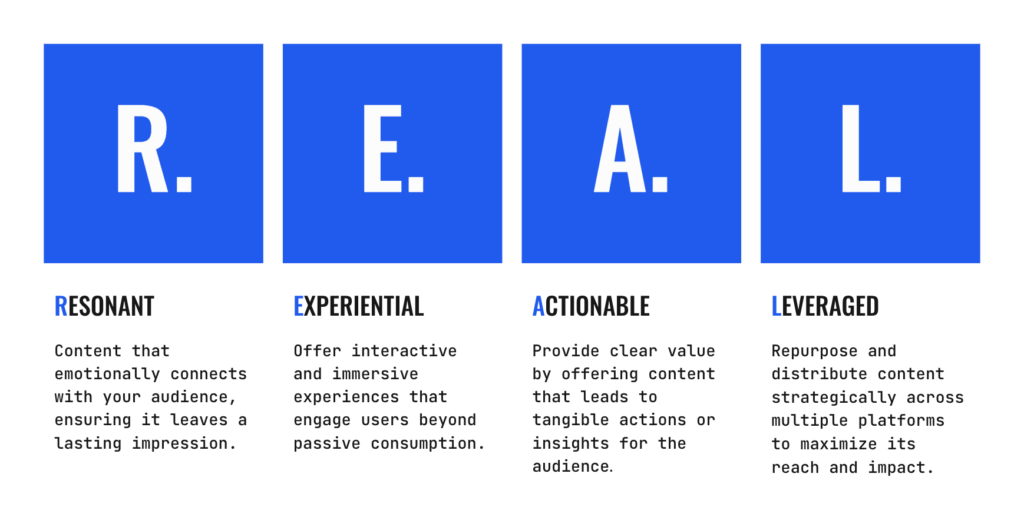
Over 225 million users engaged with Spotify Wrapped in 2023. Why? It was hyper-personal, social-ready, designed for sharing, and triggered emotion. It wasn’t just data. It was an accounting of their listening history, most played songs and artists all in a highly visual and easily distributed experience. It leveraged every pillar of R.E.A.L and is highly anticipated every year for that reason.
But resonant content isn’t only for huge brands with $10M budgets. You just need a strategy:
- Solve an audience pain point
- Speak their language
- Build themes with empathy mapping
- Survey them
- Offer clear incentives
- Create with atomization in mind
2. Engage Beyond the Click
We’ve said a lot about the decline in Organic Search traffic and the rise of AI. What we are going to do about it is the question we should all be asking ourselves now. Traffic is still imperative. How we get that traffic is adjusting and what we do with it is going to be key.
Content that resonates takes investment and getting visitors there is the starting point. Content now needs to be responsible for driving the visitors deeper into the experience and the top of the funnel.
Interaction and incentives turn a content experience into a built-in funnel. Here are some steps in the content conversion funnel to consider:
- Click: The inflection point. They’ve landed and now we have to provide a next step
- Engage: This is more than time spent, this is interaction. Provide hover and dropdown components, data visualization, input driven elements to turn visitors from passive consumer to active participants
- Capture: Incentives such as more content or results help drive down funnel conversion
- Nurture: Follow-up on the incentive. Offer additional incentives. Personalize to deep the connection
- Convert: You’ve built the connection and can continue to drive to full conversion

Having a post-click strategy can power email campaigns, retargeting, and lead magnets and provide even more quantifiable ROI from content.
In addition to content conversions, treating content like both marketing and product can help get buy-in for resources, drive audience engagement and increase the value of your content. Consider the example of Morning Brew, where content is the marketing and the product. They grew from 100,000 to 1 million subscribers in 2 years and have industry high open rates of ~40%.
3. Design for Interaction Over Consumption
We’ve touched on this in the other elements but it can’t be understated. The days of text-based content being the dominant format are long gone. We’re living in a multi-channel/multi-format world with video and interactivity at the helm. Passive content is forgettable and if you want to drive resonance you have to invite and encourage audience participation.
Interaction triggers such as polls and quizzes encourage collaboration and a give and take relationship with your audience. You ask for their input and you provide an output. Video and audio content, while seemingly passive, is engaging and requires active listening, rewatching, and replaying.
By architecting content with interaction at the forefront, you can ensure your audience’s participation and foster a loop that your audience actively signs up for.

Steps to Take Right Now for Content Resonance
Content resonance is a step beyond engagement. It’s truly understanding your audience and developing content they want and need. Now that you understand how content resonance works, what steps can you do right now?
- Understand your audience better. Review customer data, build personas, and create empathy maps to understand their pain points and needs.
- Audit your current content with the new metrics and truly assess what content keeps your audience engaged and taking the next step.
- Ideate new ideas, think outside the box, and tailor experiences that foster built-in interaction and participation
The future of content is no longer about just clicks, it’s about creating connections that resonate, engage and endure to build lasting community.
If you need some guidance developing your new content resonance strategy, we’re here to help. Reach out today and let’s talk about how you can create the kind of content that resonates.

